Welcome to Tonometer 101, your go-to guide for all things tonometer-related! In today’s fast-paced world of modern eye care practices, staying on top of the technical aspects can indeed be challenging. But that’s where we bridge the gap. As an eye care professional, knowing your way around a tonometer – understanding what it is, how it works, and ultimately how to use it – is of paramount importance.
In this comprehensive guide, we aim to arm you with the essential knowledge about the intriguing device that is the tonometer. To help you navigate, we shall be covering:
Remember: Tonometer mastery is not an overnight achievement but a skill that’s honed over time – and we’re here to guide you every step of the way.
Now, let’s dig a little deeper into tonometers. The centerpiece of this device is a plunger, which moves vertically and essentially goes through a footplate that’s curved, sitting neatly on top of the cornea when you have your patient in the supine position.
The great news for all eye care practitioners is that improvements in technology have made it possible for optometrists to tailor their choice of tonometer according to the unique needs of each patient. Isn’t that fantastic? You now have access to a wide range of tools like the Schiotz Tonometer, the new electronic Mackay Marg Tonometer, and the Perkins Tonometer.
Many might ask, what exactly is the role of a tonometer? Well, tonometry – as our science buffs would say – is a diagnostic procedure where the pressure inside the eye is measured using a tonometer. Now, there are a couple of different types of tonometers to keep in mind: the Indentation Tonometer and the Applanation Tonometer. Each has their own merits and best use situations.
The need for constant monitoring of eye pressure has led to the advent of self-tonometry. This process enables patients to monitor their intraocular pressure at home, which understandably, can be a huge benefit for those with chronic eye conditions.
It’s also worth mentioning the non-contact tonometer. As the name suggests, this type doesn’t make direct contact with the eye, making it a less invasive, yet still effective, option for measuring intraocular pressure.
As you venture into the realm of tonometry, remember that the right tool for the job often depends on the unique needs of each individual patient. With the plethora of tonometers available today, tailored care can truly be realized. From non-contact pneumotonometry to the Goldmann applanation tonometer, Icare Home tonometer, and the Ocular Response Analyzer, the options can seem bewildering. However, knowing the basics about each type and their unique applications will enable you to make the best choice.
Let’s start with Indentation Tonometry. The tonometer here comes with a vertically moving plunger that is centered and passes through a curved footplate. This footplate sits directly on the cornea when the patient is in a supine position. This type of tonometer is robust and suited for a variety of situations.
On the other hand, Applanation Tonometry is another common modality. Of these, the Ocular Response Analyzer (ORA) and the Tonopen are particularly popular due to their effective and reliable results. These are great options for high-volume clinics that need quick, accurate results with minimal sanitization between patients.
In addition to the aforementioned tonometers, portable ones such as the Perkins tonometer present an ideal solution for instances where a mobile solution is needed. Pediatric screenings, outside clinics, and in-home consultations are just a few situations where having a Perkins tonometer could prove beneficial.
Then, there are special cases and ocular conditions to consider when choosing the tonometer. Patients with irregular corneas, soft contact lenses, or those who have undergone LASIK surgery may require a more specialized approach. This is where advances in technology and the variety of tonometry methods save the day. Rest assured, selecting the right tonometer for your practice will lead to optimal patient outcomes and efficient workflow.
For instance, let’s take a closer look at a couple of specific types of tonometers and how they work. Applanation tonometers like the Goldmann and Perkins models are classic choices in most eye care practices. They measure the force required to flatten (or applanate) a certain area of the cornea, with the readings then converted into intraocular pressure values. Speaking of corneas, if you’re dealing with corneal surface abnormalities or contacts, instruments like Tonopen, which doesn’t rely on optical systems, can be more reliable.
Applanation tonometry is just one side of the coin. There’s also indentation tonometry, which employs distinct techniques such as a pneumatic pump or a plunger connected to a weight to measure intraocular pressure. It calculates the extent of the eye’s indentation when a specific and preset amount of force is applied.
Among the burgeoning range of tonometers is the Ocular Response Analyzer (ORA). This technologically-advanced, dynamic bidirectional applanation tonometer doesn’t just measure intraocular pressure. It measures corneal hysteresis as well. In simpler terms, it’s the eye’s shock-absorbing capacity, a value with potential significance in detecting glaucoma progression risk. Along with providing corneal-compensated intraocular pressure, this tool can enhance your diagnostic capabilities significantly.
Such is the world of tonometry today: rich, sophisticated, and wide-ranging. It evolves with every breakthrough, with a tonometer for practically every eye condition or situation. It’s all about the right tool for the right patient. Remember, every step taken towards a more personalized choice of tonometer for each patient is a step toward better eye care all around.
Let’s dive into the realm of tonometry more deeply, to equip you better in navigating these waters. Have you considered a non-contact pneumotonometer? They are magnificent for fast, simple readings, especially in high-traffic settings like screening programs. Here, their effectiveness lies in their ability to deliver a quick estimate without physical contact with the eye, eliminating the risk of disease transmission and making them ideal for young, anxious patients.
If we mention applanation tonometry, the Goldmann applanation tonometer cannot be overlooked. It’s widely regarded as the gold standard, and for good reason. It relies on a flattened area on the cornea to gauge the intraocular pressure (IOP), a pivotal piece of data in the diagnosis and management of glaucoma. Similarly, the Perkins tonometer offers the same accuracy but with the added advantage of portability.
Speaking of portability, the Icare Home Tonometer is a breakthrough product that deserves your attention. It offers the freedom of home-tonometry to patients, empowering them to monitor their eye pressure right from the comfort of their homes. This can be particularly beneficial for continuous tracking of glaucoma.
Now, imagine a tonometer that does more than just measure IOP – cue the Ocular Response Analyzer. Not only it provides a measure of the IOP, but it also quantifies the biomechanical properties of the cornea. It measures corneal hysteresis, a crucial risk factor for glaucoma, providing all-encompassing insights into ocular health.
For the more unique situations, such as irregular corneas, soft contact lens wearers, and post-LASIK cases, specialized tonometers are also available. As eye care professionals, it is our duty to be familiar with these diverse options and make informed decisions based on the patient’s unique needs and condition.
Choosing just the right tonometer for each patient is now easier than ever, thanks to technological advances. Optometrists have a variety of tools at their disposal, each specifically designed for a different set of ocular conditions. From the trusted Goldmann applanation tonometer to the innovative Icare Home tonometer, the choice has never been more diverse or patient centric.
Indentation tonometers, a cornerstone in the world of optometry, operate by creating an indentation in the cornea to measure the intraocular pressure. Although these devices may not provide the same level of precision as their applanation counterparts, they are critical in situations when a quick and direct reading is necessary for patient health.
| Type of tonometer | Method | Application |
|---|---|---|
| Applanation Tonometer | Measures IOP by flattening the cornea with a puff of air and determining the amount of reflected light | Used in general eye examinations for early detection of glaucoma |
| Indentation Tonometer | Utilizes a plunger to indent the cornea, with a specific deformation shape and significant intraocular fluid displacement | Suitable for quick and direct readings, especially when patient’s condition prohibits the use of applanation tonometry |
| Non-contact Pneumotonometry | Measures IOP by emitting a puff of air onto the eye without requiring direct contact | Ideal for patients who may have a high risk of infection or are uncomfortable with direct eye contact |
| Goldmann Applanation Tonometer | Utilizes applanation method and provides high precision readings | Used in thorough eye examinations and research studies |
| Icare Home Tonometer | Enables self-measurement of IOP at home | Optimal for patients needing regular IOP monitoring at home |
| Ocular Response Analyzer (ORA) | Provides a detailed analysis of corneal response to a quick air impulse | Best suited for in-depth analysis and research purposes |
| Tonopen | A portable device that measures IOP by flattening the cornea with an electronic reading | Good for on the go IOP measurements or in environments with limited space |
Set as the current gold standard in the field, the Goldmann applanation tonometer sits at the forefront of IOP measurements. It uses a convex probe to flatten a known area of the cornea, thereby giving an accurate approximation of the intraocular pressure. It combines precision and consistency, making it the go-to device for many eye care professionals.
As another type of applanation tonometer, the Tonopen offers the convenience of portability without compromising on precision. Its handheld size and digital readouts make it an ideal choice for situations where rapid, accurate readings are paramount. This device serves as an excellent alternative when traditional Goldmann devices are impractical to use.
For eye care professionals aiming to achieve the best results with the Tonopen, adherence to certain best practices is highly recommended. First and foremost, maintaining a steady hand while taking measurements is crucial. Although the Tonopen is compact and designed for ease of use, precision still matters. Remember that for accuracy, the device should remain perpendicular to the cornea during usage.
Hygiene is another non-negotiable aspect of tonometer usage. Always ensure that the tiniest components of the Tonopen, like the tip, are thoroughly clean and disinfected before use. This not only safeguards the health of your patients but also enhances the accuracy of your measurements.
Moreover, it’s essential to routinely calibrate the device to uphold its accuracy and reliability. While the Tonopen’s digital interface simplifies calibration, a consistent schedule for this task aids in maintaining its performance over time. Each maintenance session helps extend the life of this invaluable diagnostic tool. Finally, integration of the Tonopen measurements with other readings can lend a more comprehensive analysis and facilitate better decisions regarding patient care.
The varied types of tonometers allow you to select the perfect unit for each patient’s distinct condition. Thanks to technology, devices like the Tonopen and Perkins tonometer have evolved to cater to patients with unique needs such as irregular corneas or those with contact lenses. Due to their portable design and high accuracy, these tonometers have become staples in eye care practices.
The Tonopen, for instance, is a leading portable tonometer recognized for its precise IOP readings despite corneal irregularities and the presence of contact lenses. Its electronic gauge offers a more accurate evaluation compared to diagnostic procedures dependent on optical systems. Both the Tonopen and Perkins tonometer work well in any position, providing ample flexibility during eye examination sessions.
Another innovation is the dynamic bi-directional applanation tonometer. This device stands out for its ability to measure corneal hysteresis, a risk factor for glaucoma progression, in addition to corneal compensated IOP. With recent advancements in tonometry, you are now equipped to enhance the quality of care and the spectrum of your diagnostic services for the benefit of your patients.
To meet varying eye care needs, optometrists should be judicious in choosing the most suitable tonometer type for each patient. It’s not an ‘one size fits all’ solution. The success of an eye examination often relies on the right alignment of the tonometer to the patient’s condition— leading to more accurate results and improved patient outcomes.
A: A tonometer is used to measure intraocular pressure (IOP), a critical metric in the diagnosis and treatment of conditions like glaucoma.
A: Applanation tonometers work by flattening the cornea using a puff of air, and then gauging the amount of reflected light. This process helps to accurately measure the IOP.
A: The Dynamic Bi-Directional Applanation Tonometer is widely used in complicated eye conditions as it measures both corneal hysteresis and corneal compensated IOP, key indicators monitored in the progression of glaucoma.
A:The Indentation Tonometer leverages various techniques such as pneumatic pump indentation, a combination of indentation and applanation or with the use of a plunger attached to a weight. The aim is to minimize comfort and get precise measurement of IOP in mm Hg.
A: The Tono-Pen is a versatile tool as it involves both applanation and indentation processes to calculate IOP, improving the efficiency and accuracy of the measurement.
Understanding tonometry and the diverse types of tonometers – be it Applanation, Indentation, or the dynamic Bi-Directional setup, can undeniably enhance the efficiency and efficacy of eye-care procedures. Knowledge of these tools not only provides understanding of their individual functions but also how they collectively contribute to a comprehensive eye examination, particularly in diagnosing and monitoring conditions like glaucoma. This exploration of tonometers showcases the remarkable developments in ophthalmic technology, offering us numerous ways to measure intraocular pressure efficiently, accurately, and with increased patient comfort.
Ready to explore a comprehensive range of quality tonometers for your practice? We invite you to visit our website and discover how the right tonometer can optimize your procedures and bring the best eye-care to your patients.
VISIT OUR SHOP
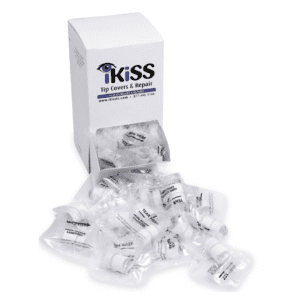
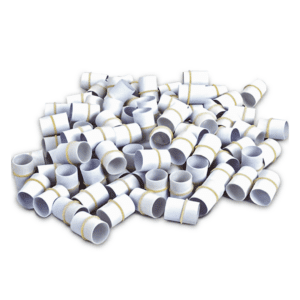
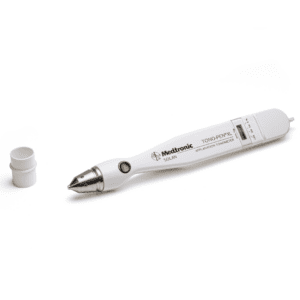
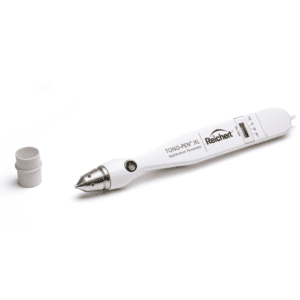
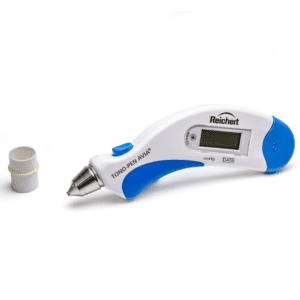
iKiSS is the go-to provider for top-quality refurbished Tono-Pen® Tonometers, Tono-Pen AVIA® Tonometers, Slit Lamps, and Phoropters, offering substantial savings of up to 40%.